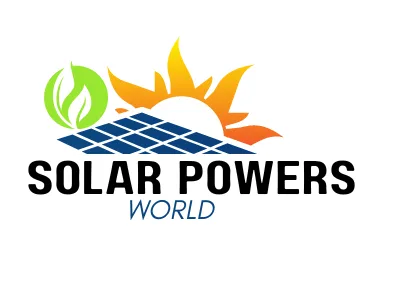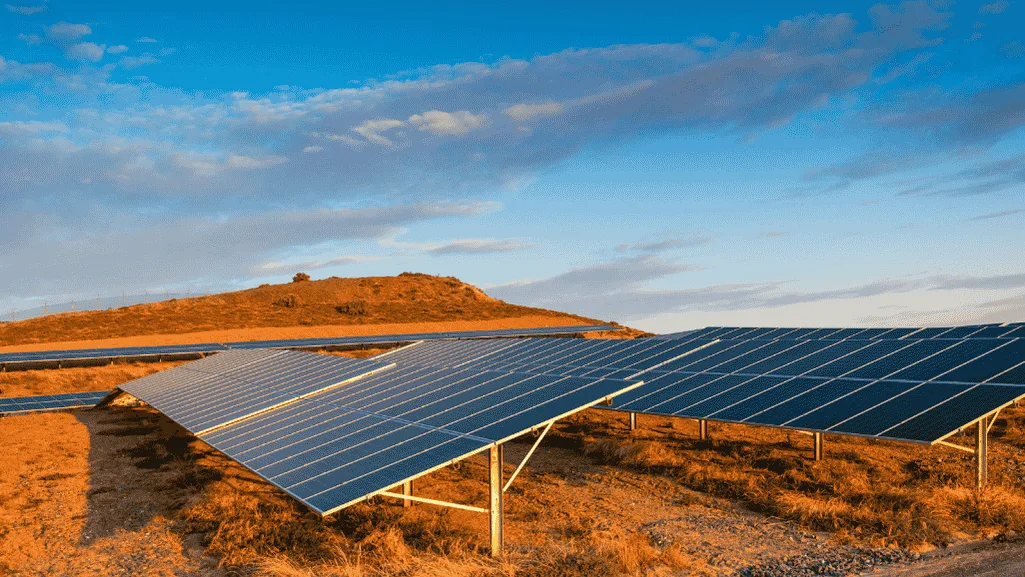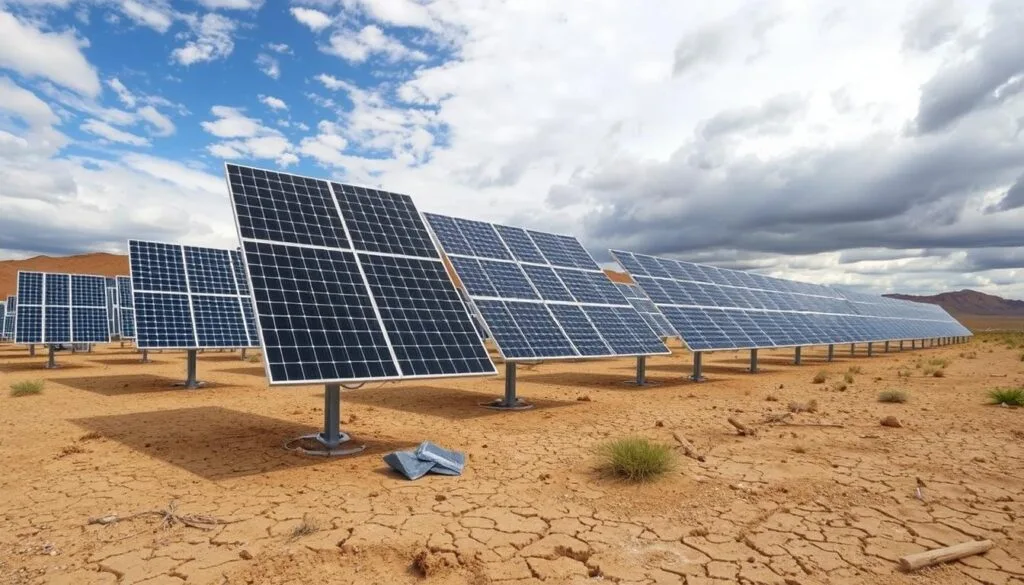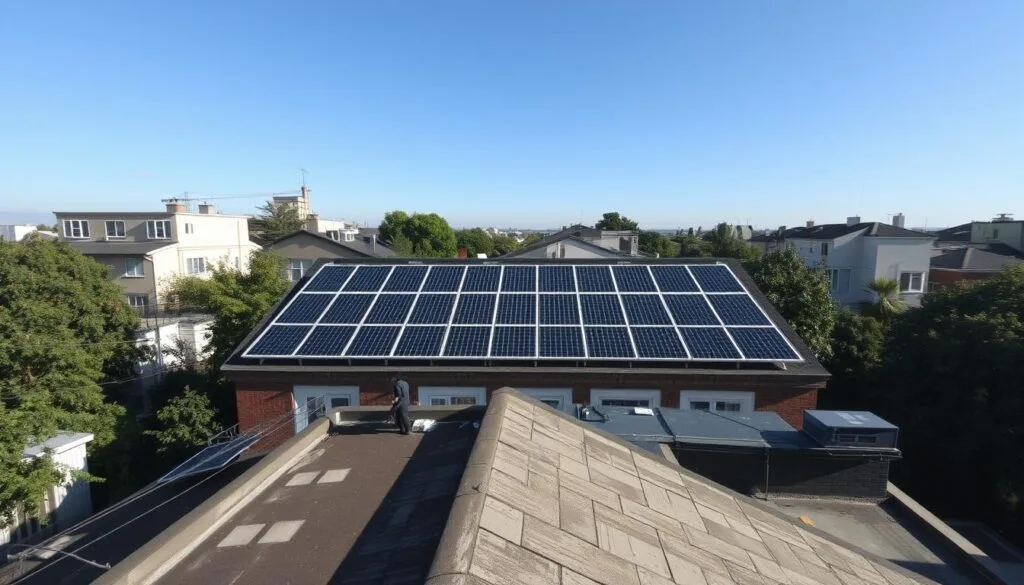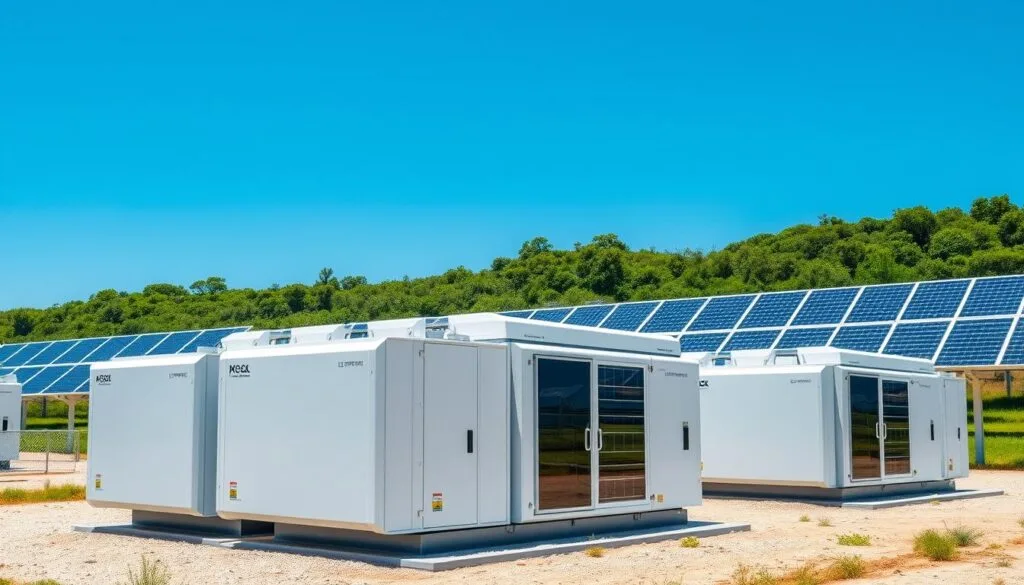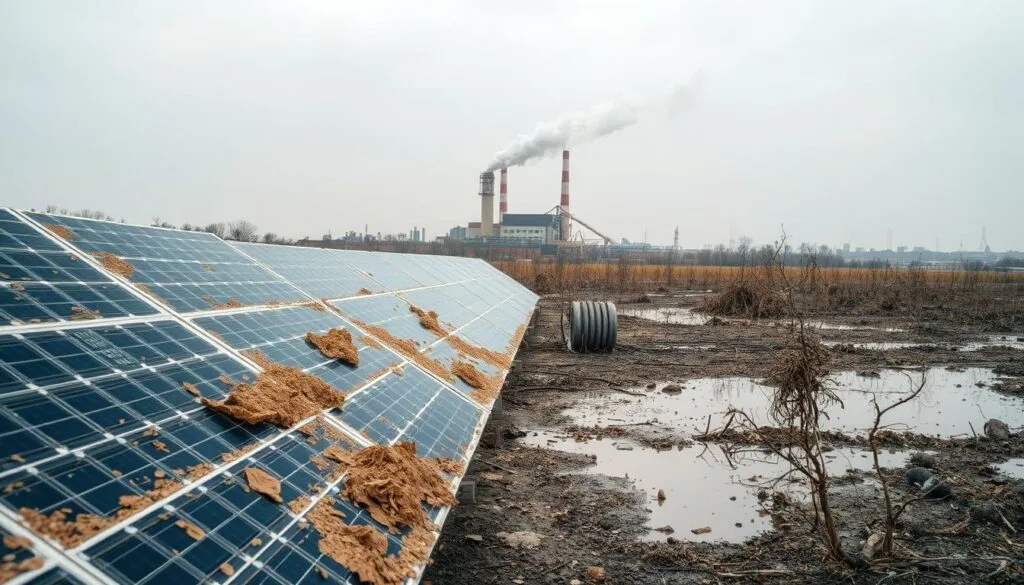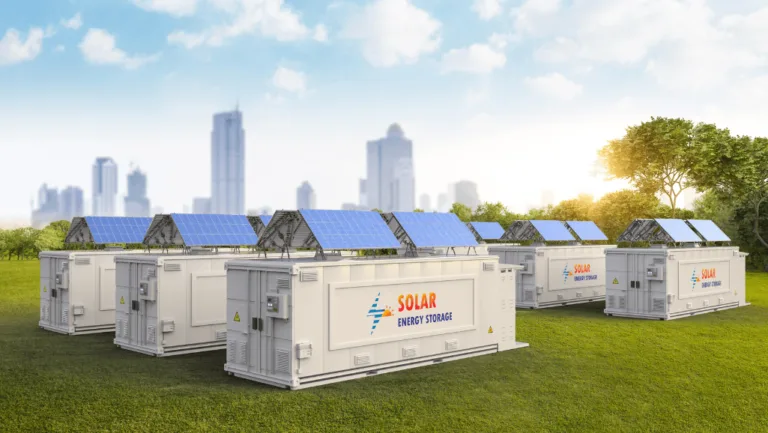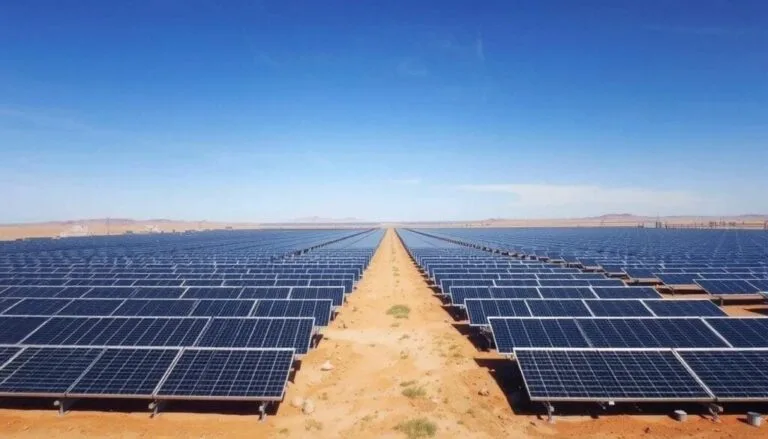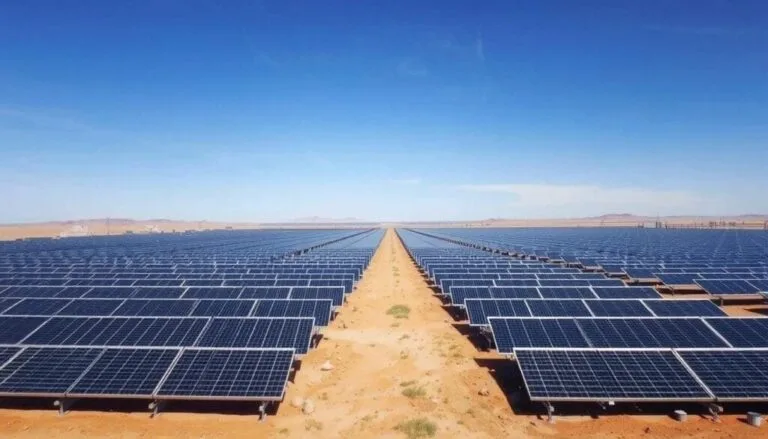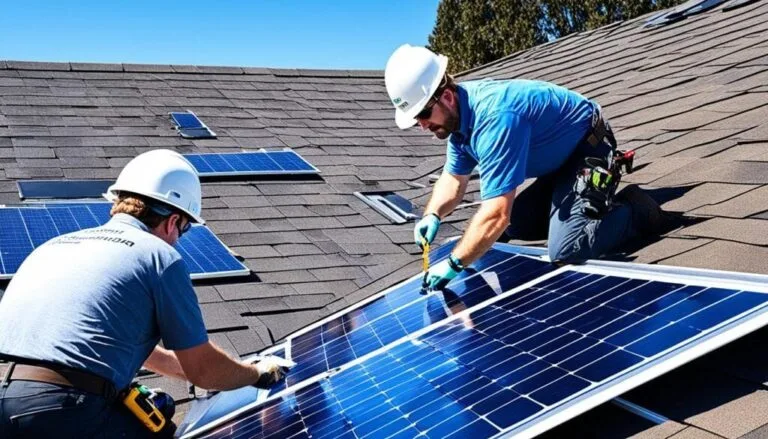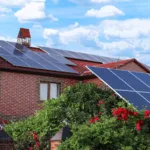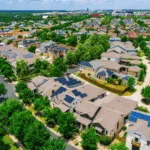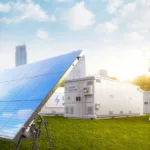Solar energy is becoming more popular as a green option. But, it’s important to know the downsides before getting solar panels. Homeowners should think about the costs and environmental impact.
High costs and weather dependence are big issues. Limited roof space and environmental concerns during making are also problems. Solar panels might not work well everywhere, and they need regular care.
Knowing the problems with solar tech helps you decide if it’s right for your home. Look at the downsides to see if the benefits are worth it for you.
Key Takeaways
- Solar energy has both benefits and drawbacks that homeowners should consider before investing.
- High upfront costs and dependence on weather conditions are among the main disadvantages of solar energy.
- Limited roof space, expensive storage solutions, and environmental concerns during manufacturing are other potential issues.
- Solar panels may have efficiency limitations and require ongoing maintenance, adding to overall expenses.
- The effectiveness of solar energy can vary based on geographical location and climate.
High Upfront Costs of Solar Panel Installation
One big drawback of solar energy is the high cost to start. Installing a solar panel system can be very expensive. This includes the cost of panels, inverters, and other needed parts.
Expensive Initial Investment for Homeowners
The cost to install solar panels in 2024 is between $18,000 and $20,000. This is before any solar energy incentives or tax credits are applied. This is a big drop from 2010’s costs, but it’s still a lot for most families.
However, over 25 years, homeowners can save a lot. They can save between $25,000 to over $110,000 by using solar energy.
Cost of Solar Panels, Inverters, and Other Equipment
The main parts that make solar panels expensive are the panels, inverters, and other needed items. The cost of panels varies a lot. It can be from $3,000 to $35,000, depending on the brand, efficiency, and size.
Inverters are also key. They change the direct current (DC) electricity from panels to alternating current (AC) electricity used in homes. This can add $1,000 to $4,000 to the total cost.
| Component | Cost Range |
|---|---|
| Solar Panels | $3,000 – $35,000 |
| Inverters | $1,000 – $4,000 |
| Other Equipment (Wiring, Mounts, etc.) | $1,000 – $3,000 |
Installation and Labor Expenses
Homeowners also need to think about the cost of professional installation and labor. Installing solar panels is a complex job that needs expertise. This ensures the system works well and safely.
These costs can be from $5,000 to $10,000. They depend on the system’s size, complexity, and local labor rates. While some might try to do it themselves, it’s best to hire experts. This ensures the system works right and lasts long.
Even with the high start-up costs, solar energy has long-term benefits. Solar panels can last 25 to 35 years, saving money on electricity bills. The federal solar tax credit also helps, covering 30% of costs.
As technology gets better, solar power becomes more appealing. It’s a good choice for those who care about the environment and are willing to invest upfront.
Solar Energy’s Dependence on Weather Conditions
Solar energy is popular as a green source, but it faces a big challenge. Its power changes with the weather and day-night cycle. This makes it hard to rely on solar energy all the time.
Reduced Efficiency on Cloudy and Rainy Days
Solar panels need direct sunlight to work well. But on cloudy or rainy days, they get less sunlight. This means they make less electricity.
Even on cloudy days, solar panels can still make some power. But it’s much less than when it’s sunny. This is a big problem for places that often have cloudy or rainy weather.
Solar energy production can be impacted by adverse weather conditions like heavy rain or snow, reducing efficiency.
Inability to Generate Energy at Night
Solar energy can’t make electricity at night because there’s no sunlight. This is a big challenge because people need power at night too. To solve this, solar systems use batteries to store extra energy for nighttime use.
But, batteries can be expensive. They might not have enough power to meet all nighttime needs. This makes solar energy less reliable for some people.
| Weather Condition | Impact on Solar Panel Efficiency |
|---|---|
| Sunny | Optimal energy generation |
| Cloudy | Reduced efficiency, lower energy output |
| Rainy | Significantly reduced efficiency, minimal energy generation |
| Night | No energy generation, reliance on stored or grid energy |
The need for better energy storage and hybrid systems is clear. These would make solar energy more reliable. As technology improves, solar power could become a more dependable green energy source.
7 disadvantages of solar energy
Solar energy has many benefits, but it’s important to know the downsides before getting a solar system. Here are seven key drawbacks of solar energy:
- High upfront costs: Getting solar panels installed can cost a lot, from $10,000 to $30,000. This includes the panels, inverters, batteries, and the work to install them.
- Weather dependency: Solar panels need sunlight to work well. On cloudy or rainy days, they don’t work as well. Places like Hilo, Hawaii, with lots of rain, might not be the best for solar energy.
- Limited roof space: Solar panels need a lot of room to work best. If your roof is small or not shaped right, you might not be able to put up enough panels.
- Expensive storage solutions: To use energy at night or when it’s cloudy, you need expensive batteries. These batteries cost over $100 each and aren’t usually covered by the warranty.
- Manufacturing pollution: Making solar panels uses harmful materials and can pollute. If not disposed of right, it can harm the environment.
- Efficiency limitations: Most solar panels only turn 15% to 20% of sunlight into electricity. This can be even less in places with less sunlight.
- Maintenance and repairs: Solar systems need regular care to keep working well. This includes cleaning, replacing parts, and checking energy output. These costs can add up over time.
Homeowners also need to think about how solar panels look and any rules from homeowners associations. The effectiveness of solar energy also changes based on where you live. Places farther from the equator get less sunlight.
| Location | Solar Energy Disadvantage |
|---|---|
| Vancouver, Canada | Reduced efficiency due to distance from the equator |
| St. Petersburg, Russia | Reduced efficiency due to distance from the equator |
| Hilo, Hawaii | Frequent rainfall (277 days per year) limits solar power generation |
| Regions with frequent fog or low-cloud conditions | Solar resource reduced to approximately 10% of clear-sky value |
Even with these challenges, solar energy is getting cheaper. From 2010 to 2019, it went from 0.06% to 1.11% of global energy. In 2020, installations grew by 22%. As technology gets better and prices drop, solar energy might become more appealing to more people.
Limited Roof Space for Solar Panel Installation
One big problem with solar panels is needing a lot of roof space. The size of your home, how much energy you use, and the panel’s efficiency all play a part. If your roof is small or not right for panels, you might not get enough solar energy. This limits how much you can use this green energy source.
Requires Significant Area for Optimal Energy Generation
To power a home well, you need many solar panels. The exact number depends on your energy use and panel quality. A study by The Green Solutions says most homes need 20 to 30 panels. This can take up a lot of roof space.
Potential Issues with Roof Orientation and Shading
The roof’s direction and any shading from trees or buildings also matter. The best roofs face south and get little shade. But, not all homes are lucky enough to have such roofs. This can be a big problem for those thinking about solar energy.
A report by Solar Power World shows that even a little shade can cut energy by half. So, if your roof is shaded or not facing the right direction, you’ll get less energy. This makes solar energy less useful for some homes.
| Roof Characteristics | Impact on Solar Panel Efficiency |
|---|---|
| South-facing orientation | Optimal for maximum sunlight exposure |
| East or West-facing orientation | Reduced efficiency compared to south-facing roofs |
| Partial shading from trees or buildings | Can reduce energy production by up to 50% |
| Flat or low-pitch roofs | May require additional mounting equipment for optimal panel angle |
Solar energy has many good points, like saving money and being better for the planet. But, the need for a lot of roof space and issues with direction and shading are big downsides. These problems can make it hard for some homes to use solar power fully. It’s key to check if your roof is right for solar panels before you start.
Expensive Solar Energy Storage Solutions
Solar panels are getting cheaper and more efficient. But, storing solar energy is still a big challenge. Homeowners can use batteries to save energy made during sunny hours. This way, they can use it at night or when it’s cloudy. But, these batteries are pricey, making solar power less affordable for many.
Lithium-ion batteries, the most common, cost between $9,500 and $23,000. This price depends on the battery’s size and quality. The cost of batteries can make solar power hard to get for some. Also, installing them requires professional help, adding to the expense.
Even with the high costs, solar batteries have many benefits. They can store energy for nighttime use or during power outages. They also help keep the power grid stable. Plus, they reduce carbon emissions, making them a green choice.
Solar batteries last about 5 to 15 years, with an average of 10 years. This is shorter than solar panels, which last 25 to 30 years. Batteries also have limited storage, depending on what a home or business needs.
Federal tax credits, rebates, and net metering are common incentives provided for installing solar-plus-storage systems, boosting affordability.
Thinking about solar energy storage means weighing the costs and benefits. The initial costs are high, but there are incentives like tax credits and rebates. Also, having a backup power source and saving on energy bills are long-term advantages.
| Battery Type | Cost Range | Lifespan |
|---|---|---|
| Lithium-ion | $9,500 – $23,000 | 5-15 years |
| Lead-acid | $5,000 – $15,000 | 3-10 years |
As solar tech improves, we hope storage costs will drop. This will make solar power more affordable for more people. For now, those thinking about solar should look at their energy needs and budget. This will help decide if the cost of storage is worth it.
Pollution and Environmental Concerns in Solar Panel Manufacturing
Solar energy is clean and renewable, but making solar panels can harm the environment. The process uses harmful materials like acids and chemicals. If not handled right, these can pollute and harm workers’ health.
Emissions and Use of Hazardous Materials in Production
Making solar panels uses a lot of energy, which can pollute. But, solar panels only need a lot of energy at the start. They use less energy when they’re working and even less when they’re done.
Coal, on the other hand, pollutes a lot more. It makes most of its pollution when it’s being used, not when it’s made or disposed of.
| Energy Source | Life Cycle Emission Intensity (gCO2/kWh) |
|---|---|
| Solar Photovoltaic (PV) | 40 |
| Coal | 1,000 |
The table shows coal pollutes much more than solar energy. This shows solar power is better for the environment, even with some initial pollution.
Challenges in Solar Panel Disposal and Recycling
Getting rid of solar panels when they’re done is hard. They have toxic materials that can be dangerous. By 2050, there could be 78 million tons of solar panel waste worldwide.
To fix these problems, some states have laws for recycling solar panels. U.S. laws also help manage hazardous materials in making solar panels. We need better ways to make and recycle solar panels to protect our planet.
Aesthetics and Visual Impact of Solar Panels
Solar energy has many benefits, but it can change how a home looks. Solar panels can make a home’s roof look different, which might not please everyone. Some see them as a sign of caring for the planet and being modern. Others might find them ugly or out of place with their neighborhood’s style.
Potential Alteration of a Home’s Appearance
How people see solar panels on a roof varies a lot. Some like their sleek look, while others prefer something more classic. The size, where they’re placed, and how they face can also affect how they look.
Those who want to keep their home’s original look might not want solar panels. They worry about how they might change the home’s appearance.
Homeowners Association Restrictions and Approval
Another issue is what homeowners associations (HOAs) say about solar panels. Many neighborhoods have rules about how homes can look. These rules might not let you put up the solar panels you want.
Getting HOA approval for solar panels can be hard and slow. It might make some people give up on solar energy. Finding a way to meet HOA rules and still get solar power can be tough.
New solar tech is making homes look better with solar energy. Solar shingles and tiles look like regular roofing but work like solar panels. They could solve the problem of solar panels making homes look bad. As they get cheaper and more common, they might help more people use solar energy without worrying about how it looks.
Efficiency Limitations of Solar Technology
Solar energy has many benefits, but it also has some limits. Most solar panels can only turn about 15% to 20% of sunlight into electricity. This is a key drawback to consider when thinking about getting a residential solar power system.
Several things can change how well solar panels work. The material, design, and temperature all play a role. For example, panels made from monocrystalline silicon are more efficient but cost more. Cheaper options, like polycrystalline silicon panels, need more space but are less expensive.
“Research has shown the development of a thermoradiative cell using infrared technology for generating energy 24 hours a day, overcoming the limitation of solar panels not operating at night.”
Solar panels also lose efficiency over time. They can lose 0.5% to 1% of their power each year. This decline is something to think about when deciding on a solar system.
| Solar Panel Type | Efficiency Range | Cost |
|---|---|---|
| Monocrystalline Silicon | 17-22% | Higher |
| Polycrystalline Silicon | 13-16% | Lower |
| Thin-Film | 7-13% | Lower |
Despite these challenges, scientists are working hard to make solar panels better. New technologies like bifacial panels and perovskite cells could solve some of these problems.
While solar technology has its limits, it’s important to think about the big picture. Solar energy can help us use less fossil fuel and reduce carbon emissions. As solar tech gets better, it will likely become even more appealing to homeowners.
Maintenance and Repair Costs for Solar Systems
Solar energy has many benefits, but it also comes with maintenance and repair costs. Solar panels need little care, but other parts like inverters might need more attention. This can add up over time, making solar energy a challenge for homeowners.
Inverter Replacement and Upkeep
Inverters change the direct current from solar panels to alternating current for homes. They usually last 10 to 15 years. After that, they might need to be replaced, costing between $1,000 to $4,000. This can be a big expense, especially if the inverter fails suddenly.
Cleaning and Monitoring Panel Performance
Cleaning solar panels is key to keeping them working well. Dirt and debris can lower their efficiency. Professional cleaning can cost $150 to $400 per visit, depending on the system size and job complexity. Homeowners can also clean them, but it takes time and effort.
It’s important to check how well your solar panels are working and fix any problems quickly. But, this can take time and might cost extra, like for monitoring software or professional help.
| Solar System Component | Lifespan | Replacement Cost |
|---|---|---|
| Solar Panels | 25-30 years | $5,000 – $10,000 |
| Inverters | 10-15 years | $1,000 – $4,000 |
| Racking and Mounting | 25-30 years | $1,000 – $3,000 |
| Wiring and Electrical Components | 25-30 years | $1,000 – $2,000 |
Solar systems are built to last 20 to 30 years with little upkeep. But, things like inverter replacement and monitoring costs are important to consider. Knowing these costs helps homeowners make smart choices when thinking about solar energy.
Location and Climate Constraints for Solar Energy
Solar energy is popular for being clean and sustainable. But, its use can be limited by where you are and the weather. The amount of sunlight varies, affecting how well solar panels work.
Solar panels need direct sunlight to make electricity well. Places with lots of clouds, rain, or short days have trouble with solar power. For example, Seattle and Portland get less sun than Phoenix or Las Vegas.
Varying Solar Intensity Based on Geographical Location
Solar radiation changes a lot depending on where you are on Earth. Places near the equator get more sun all year. But, areas farther from the equator have less sun in winter.
Reduced Effectiveness in Regions with Less Sunlight
Solar panels don’t work as well in places with little sun. In cloudy or rainy areas, they can’t make enough electricity. This makes solar energy less practical in some spots.
| Region | Average Annual Sunlight Hours | Solar Energy Potential |
|---|---|---|
| Arizona | 3,806 | High |
| Florida | 2,927 | High |
| Washington | 1,987 | Moderate |
| Alaska | 1,203 | Low |
New solar panel tech helps with these issues. But, it’s key to check your area’s weather and location before getting solar. This ensures your system works well and is worth the cost.
Conclusion
Solar energy has many benefits, like saving on electricity costs and reducing carbon footprint. But, homeowners should think about the downsides before getting a solar system. High costs, weather dependence, and space issues are big challenges.
Challenges of adopting solar technology include high upfront costs and environmental concerns. Solar panels’ efficiency is between 15% to 21%. They work less well in cloudy or shaded areas.
Solar arrays need a lot of space to work well. The energy they make depends on the area covered by solar cells. They also need maintenance and face location and climate issues.
Recycling solar panels is hard and expensive. The cost of recycling is more than the value of the materials. Despite these issues, solar panels have grown in popularity over 20 years.
They are popular for saving money, caring for the environment, and government incentives. Solar panels can cut down or even eliminate energy bills. Homes with solar panels are worth more because of their independence from the grid.
As solar technology gets better and cheaper, these problems may lessen. This could make solar power more appealing to more homeowners.

